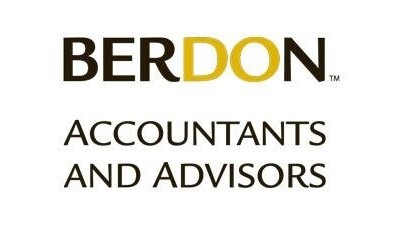Opportunity Zones: What We Know — And Still Don't Know — After Latest Federal Guidance
The U.S. government is working to make opportunity zones as appealing as possible to investors. The newest round of guidance from the Treasury Department clarified a number of ambiguities in the program’s original regulations, with the vast majority of these clarifications favoring taxpayers.

Investors and funds now have more flexibility when choosing, buying and selling opportunity zone assets, as well as more forgiving timelines in which to deploy their capital.
Yet even after the Treasury’s clarifications, there are still nuances in the wording of the tax rules that may present pitfalls for investors. It is unclear whether these exceptions and ambiguities will be resolved in favor of the taxpayer — or resolved at all — under the next round of guidance.
“This guidance has been helpful, but we don’t have all the answers yet,” Berdon Senior Principal Naya Pearlman said. “Some of the ambiguities we’re seeing now were present in the original drafting of the program, but still went unanswered.”
Pearlman stressed that potential opportunity zone investors and fund managers need to be familiar with the exact wording of the tax rules. Without professional help, these parties could inadvertently lock themselves into a tax structure or timeline that is far from advantageous.
Below are some of the topics that the latest guidelines cleared up, and some areas that are still unclear, which could be targets for changes under the final rules. This is by no means an exhaustive list. For a more complete overview of the new rules, see here.
What We Know Now
Reinvestment: Qualified opportunity funds now have a grace period of a single year after the sale of an OZ asset to reinvest the proceeds in other OZ assets. The ability to hold more cash on hand and pivot to other properties could prove valuable if a fund’s original investments are not performing at expected levels.
“The second round of regulations gives funds much more flexibility in terms of altering their investments,” Pearlman said. “This change makes the entire program more attractive.”
Partnership debt: The original wording of the program stated that investments made in a QOF began with a “zero basis” in the qualifying fund interest. Investors worried partnerships with debt would not provide a basis adjustment, which is important for distributions.
“Partnership debt is now included in the investor's basis and does not impact the amount of the deferred gain in 2026, or the gain from appreciation if the partner sells her interest in the QOF after the 10-year holding period,” Pearlman said.
Safe harbors: The OZ program isn’t just for real estate. Other businesses funded by a QOF can now qualify for tax incentives as long as they satisfy any of three “safe harbors”: at least 50% of work hours or amounts paid to employees or independent contractors are spent within the OZ, or at least half of the company's gross income is generated by tangible property of the business, and the management or operations are based in the OZ.
Vacant properties: Originally, investors who acquired property had to satisfy a “substantial improvement” provision by making significant physical upgrades to the existing structures, if they could not establish "original use" in the OZ. Vacant property that has been unused for at least five years will now satisfy "original use" in the OZ when any person first uses or places the property in service — the substantial improvement test is no longer necessary.
What We Still Don’t Know

Sale of assets: Originally, investors could only claim the full tax exclusion if they sold their QOF interests after a 10-year hold. Now that exclusion is available for sales of certain OZ fund assets as well.
However, Pearlman questions whether this route will be utilized much, as it only excludes capital gain. This option may be limited if ordinary income is generated by the asset sale.
“It would be helpful if the final regulations provide that all gain, including ordinary income, will be excluded,” Pearlman said. “It also remains unclear whether this rule applies to gains recognized on the sale of assets by a lower-tier QOZ business.”
Timing and the OZ life cycle: The general rule is that an investor has 180 days from incurring a capital gain to roll those proceeds into a qualified opportunity fund. For gains from a sale of a "trade or business" property by a partnership or S corporation, though, the 180 days begin from the end of the taxable year.
“The timing rules are not always intuitive, and they are not always to the benefit of the taxpayer,” Pearlman said. “Taxpayers may want to invest now, as soon as possible, but they can’t because the clock hasn’t started ticking yet.”
The differences between these two timelines are part of why having expert tax advice early on is so important for OZ investors, Pearlman said. The wrong fund structure could lock a QOF into a tax scheme investors did not plan for.
Where This Leaves Investors
Pearlman admitted that cautious investors may be biding their time for the last possible word from the IRS before getting involved in OZs. However, she believes it is unlikely that the rules will become less favorable for investors.
“These ambiguous areas could still be a deterrent, but the government has clearly announced its intention to make these rules more flexible,” Pearlman said. “Hopefully we’ll get the rules finalized soon after the July hearing. We’re optimistic that the final rules will be even more favorable to investors.”
This feature was produced by Bisnow Branded Content in collaboration with Berdon. Bisnow news staff was not involved in the production of this content.

